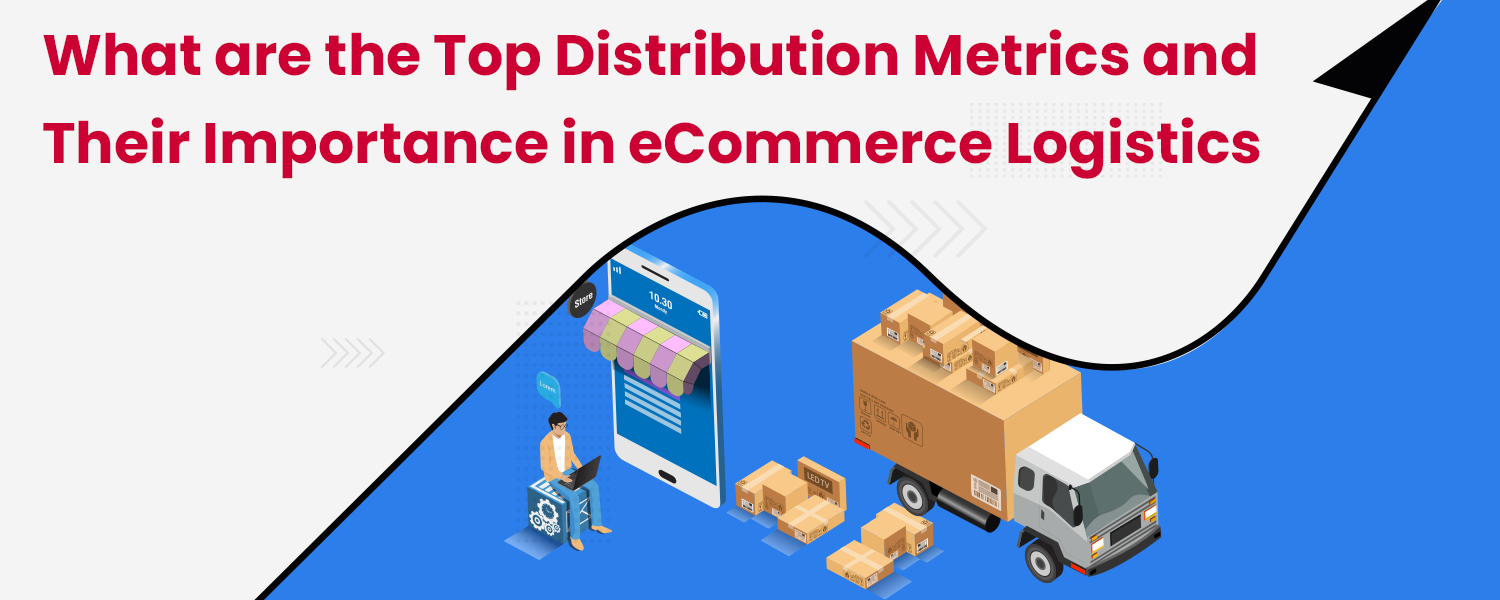Everything from customer service, marketing, and finance to human resources, IT, and supply chain management must be monitored. Distribution logistics are critical for online sellers that sell tangible items. Outbound and inbound logistics performance may be improved by tracking the correct metrics and best practices for assessing success, which helps you understand your supply chain.
To assist you in getting the most out of your distribution operations, we will go through several standard indicators for fulfillment logistics, inventory movement, and product sales.
About Distribution Metrics
Measures of distribution, which include inventory receiving, warehousing and picking, packaging, and eCommerce shipping and delivery, are called Distribution Metrics.
Key Performance Indicators (KPIs) vs Distribution Metrics
KPIs are used to determine whether or not a target outcome or value is being reached, whereas Distribution Metrics monitor the supply chain. You may use KPIs to help you negotiate service-level agreements with your suppliers. Third-party logistics companies track crucial data to hold them accountable for meeting their agreed-upon service level agreements (3SLAs). These SLAs might include everything from timely orders to the rapid receipt and storage of merchandise.
The Most Important Distribution Metrics
Many KPIs and distribution measures may be used to measure the performance of eCommerce logistics. Your profitability and ability to satisfy customer expectations are directly influenced by the indicators you choose to monitor. Here are some of the most important distribution indicators you should be monitoring.
1. Inventory Turnover Rate
The inventory turnover rate determines how many times a certain amount of inventory is sold and purchased again in a given period. A key metric of business success, cost management, and sales may be benchmarked against other businesses in a specific industry by determining your company’s average SKU inventory turnover.
(Cost of products sold / Average inventory) = Inventory turnover
2. Order Accuracy Rate
It is the proportion of orders, which are successfully delivered. Since NimbusPost has a 99.98 percent error-free delivery rate, you can use its services to make the best order accuracy rate.
(Total products delivered correctly / Total orders) x 100= Order accuracy rate
3. Time to Ship
How long does it take for a shipment to arrive after an order is made? For purchases ordered before noon local time, some logistics partners may guarantee same-day shipment. Similarly, some partners promise next-day delivery for orders placed after noon local time.
Order placement date minus shipping date equals the amount of time till delivery.
4. Total Number of Orders
For a particular period, it is about your total order volume. There are a variety of ways to measure time, from daily to quarterly to yearly.
The total number of orders placed at a certain time is the sum of all orders placed during that period.
5. Percentage of On-time Deliveries
This is the proportion of shipments that arrive on time or ahead of schedule.
It is the ratio of on-time deliveries to total deliveries times 100 or the percentage of on-time deliveries to all deliveries.
6. Accuracy in Picking Orders
The percentage of orders selected without error is similar to the product order accuracy rate, which considers packaging and not only warehouse picking.
The order picking accuracy rate is calculated as follows:
(Total orders picked without error / Total orders) X 100.
7. Undamaged Delivery Rate
The percentage of orders shipped without any damage during transit is called the non-damaged delivery rate, and its formula is shown below.
(Orders delivered without damage/Total orders delivered) x 100 = Undamaged delivery rate
How to Keep Tab on Your Sales and Distribution Metrics With NimbusPost?
Distribution and reporting metrics are often included in inventory management software as standard features. Gathering data from various systems and keeping track of distribution metrics on a sheet is the only option if you do not have technology at your disposal.
It is simple to monitor distribution stats when you outsource fulfillment to NimbusPost via a dashboard. Analytics features built into NimbusPost make it easy to monitor your most essential indicators.
You can see all the metrics you desire, add filters, acquire fresh insights, and export reports in a matter of seconds. The whole process is listed below:
- Go to the sidebar navigation and select the “Analytics” link from the drop-down menu. Afterward, select the report you want to view. Your information will be filled up automatically as soon as you begin sending orders using NimbusPost.
- Get a breakdown of the proportion of orders delivered on time, the number of out-of-stock goods, and more.
- Track the number of days it takes a package to travel, the most popular states for shipping, and the shipping methods used at checkout to see the average cart value, shipping cost, and the number of days it takes to arrive.
- View orders that have yet to be delivered by our carriers.
- View the movement and current balance of inventory using inventory reconciliation
- Check how much inventory you had for every SKU at any time at any NimbusPost fulfillment facility.
- Track your product’s performance over time, broken down by the channels via which it was sold.
- SKU velocity, remaining inventory days, and order volume fluctuations may all help with inventory planning.
- Use inventory maps to see how your present distribution is compared to your desired distribution, which can help you save money on shipping times and expenses.
- View the overall monthly expenditures by fee type, the detailed record of charges for each month, the average cost of fulfillment per order, the fulfillment cost per shipping choice, and more.
- The storage costs per unit and a complete billing summary may be viewed.
Conclusion
Tracking key performance indicators (KPIs) and distribution metrics is essential for any company. Focus on metrics that directly affect your customer satisfaction and bottom-line selecting distribution metrics for your organization to monitor. Tracking and analyzing these indicators can help you sustain your online store and enhance your procedures.




